Embracing Biodiversity as an Integral Building Block of Our Cities: Unveiling the background story of the Urban Biodiversity Parks Project and understanding what it sets out to achieve
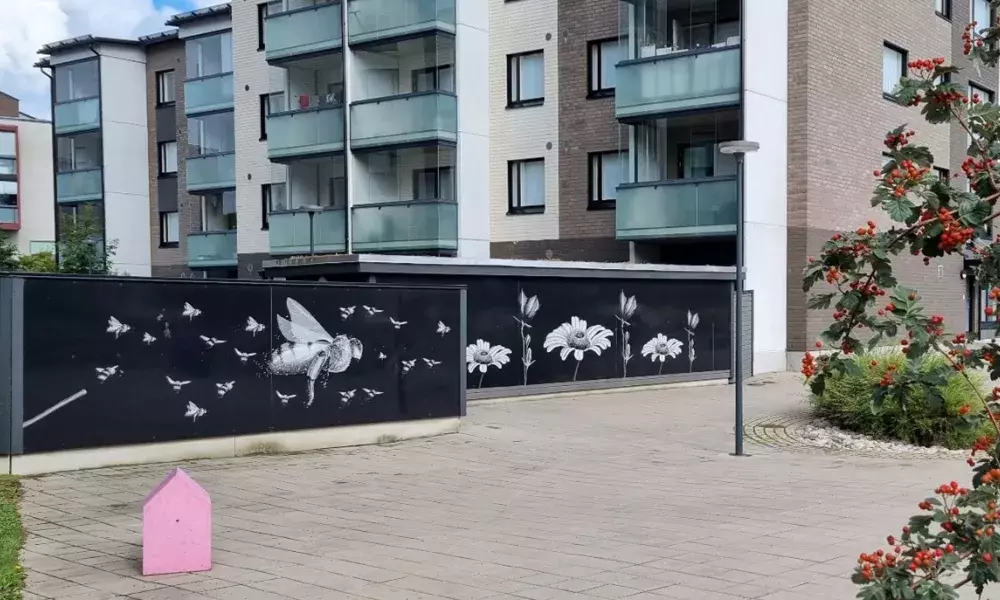
Whenever the term "biodiversity" is mentioned, the word "loss" inevitably follows. Unfortunately, rightfully so, as decades of intense human development, habitat loss, and environmental degradation have placed Earth’s biodiversity under severe threat. In the past decade, the number of endangered species has skyrocketed, with over 44.000 species at risk in 2023. This despite the fact that more than 43% of all key biodiversity areas are protected as protected areas. It leads me to wonder: “Have we been approaching this challenge the wrong way?”
Protected areas undoubtedly play a crucial role in preserving biodiversity and slowing its loss. However, it’s becoming clear that relying solely on these "biodiversity pockets" is not enough. We need to rethink what biodiversity is, where it exists, and how it functions.
We must accept that biodiversity isn’t neatly confined to designated areas of our own choosing, but rather exists all around us – even in our concrete-covered, polluted, and overcrowded cities. It exists not only in botanical gardens and parks but also on our streets, in our buildings, and even within our homes.
To truly address this, we need innovative solutions that recognize the value of urban biodiversity, reinforce it, nurture it, and teach our societies how to coexist with it. This is precisely the mission of the Urban Biodiversity Parks Project. So, dear reader, please read on as I explain further…
Turku: A City with a Vision
The city of Turku is located on Finland's southwest coast, at the mouth of the Aura River. Nestled by the Baltic Sea and sheltered by the islands of the Archipelago Sea, Turku experiences a humid continental climate. Founded in the late 13th century, it is Finland’s oldest city. With a population of around 200.000, and additional 300.000 people living in the city-region, Turku is the 3rd-largest urban area in Finland, after Helsinki and Tampere.
As the regional capital of Southwest Finland, Turku is a vibrant city, home to two universities and four universities of applied sciences. It is also a significant business hub, particularly in the fields of maritime, life sciences, information technology, entertainment, biotechnology, and sustainable development. All in all, a good example of a medium-sized city in a European context.
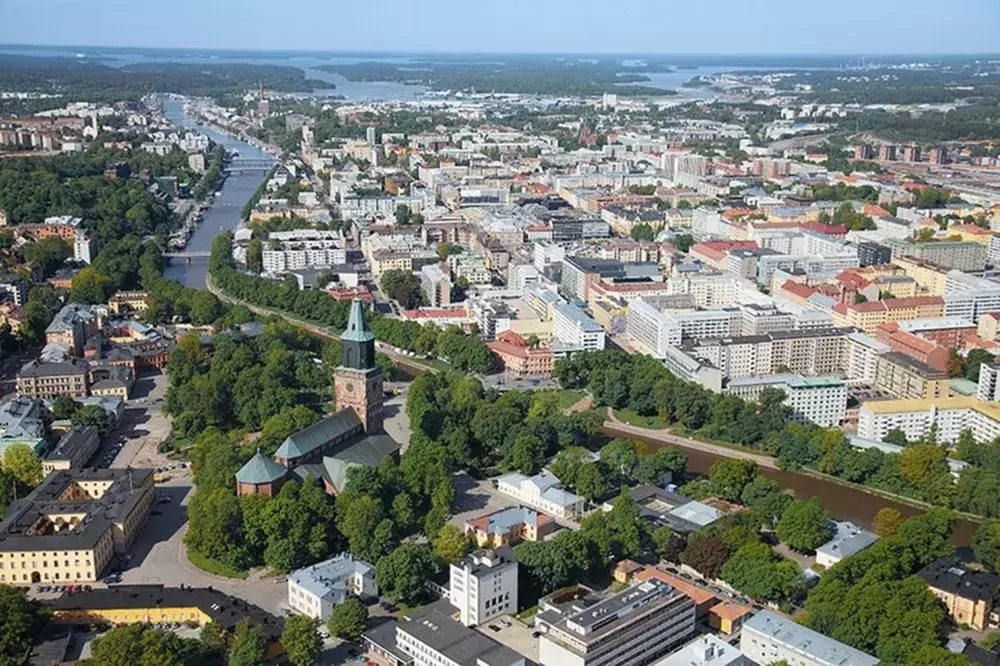
Turku covers 0,1% of the total area, but hosts over 12% of endangered species in Finland. This is why we need to be ambitious and ensure improved living conditions for both, our citizen and biodiversity.
Skanssi, the first Biodiversity Park in Europe, represents a new kind of nature conservation, where nature is not only protected, but is actively increased. This is something we are all very proud of and passionate about.
Elina Rantanen, the Deputy Mayor of Urban Environment of the City of Turku
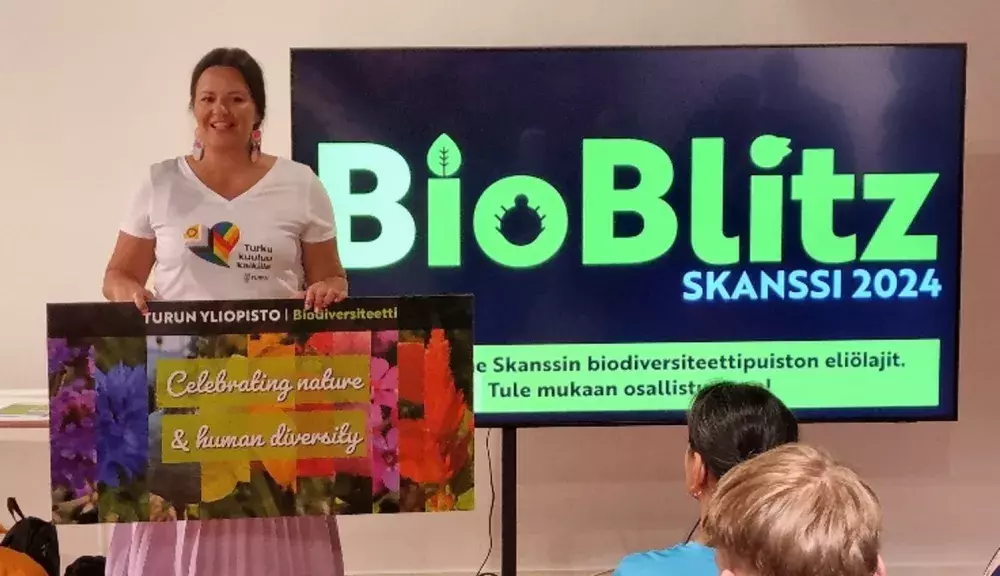
In 2030, Turku will be one of the world's leading climate and nature cities.
Turku City Strategy: Turku in 2030s
As you can see, the City of Turku and its leadership are ambitious, aiming to become a carbon-neutral city and a global leader in enhancing urban biodiversity by 2030. They recognize the close connection between these goals – improving biodiversity boosts carbon sinks, enhances resilience to climate change and improves the quality of life for Turku citizens.
To achieve these ambitious goals, the City of Turku has adopted several key strategic documents, including the Turku City Strategy: Turku in the 2030s, the Turku Climate Plan 2029, and Biodiversity Programme 2023–2029. Turku is also a signatory of the Green City Accord, a member of the 100 EU Mission: Climate-Neutral and Smart Cities, and recently joined the global CitiesWithNature initiative, which aims to protect and enhance nature while building resilience in cities worldwide. One of the most tangible steps towards realizing these ambitions is the implementation of the Urban Biodiversity Parks project.
From the Vision to the Project
Maija Rusanen from the Project Development Unit of the City of Turku and, Johanna Salmela from the Urban Environment Division, have been involved in the project development virtually from the beginning. "It all began in 2010 when the City of Turku launched a detailed planning process for the Skanssi neighbourhood. The goal was to transform the area into a green, residential community."
The Skanssi Biodiversity Park is located in the Skanssi district, within an old gravel pit on a sand ridge that runs through Turku. The sand ridge was extensively excavated in the 1950s and 1960s, creating a valley-like landscape. Over time, much of the exposed sandpit has naturally re-vegetated, with part of the area even transforming into a wetland.
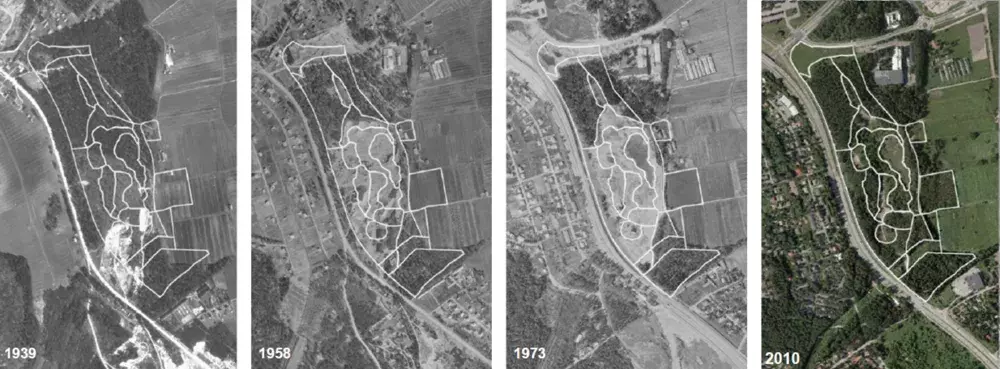
In 2016, a park plan for the Skanssi area was finalized, focusing on sustainable stormwater management integrated with attractive, green recreational spaces. At that time, there were no significant plans for the area where the biodiversity park would eventually be located—those visions emerged later.
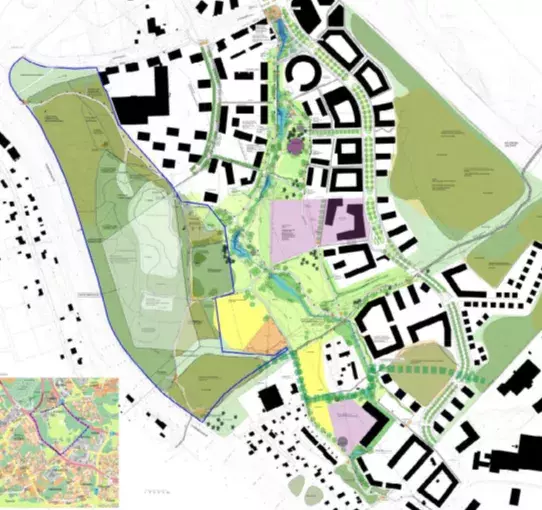
Johanna explains: “In the beginning, it was just an idea in my head…. I felt that this area had so much potential, but I couldn’t quite figure out what to do with it. Time passed, and in 2020, I reached out to Jere Nieminen from the nature conservation association Villi vyöhyke/Wild Zone. At that time, he just returned from India, where he had learned about the Biodiversity Parks concept. When he saw the Skanssi area, he immediately suggested we create the first European Biodiversity Park right here. So, there we were - with this fantastic idea but no funding. I pitched the idea to the management of the Urban Construction Unit and was directed to Maija’s office."
I feel like this project is "my baby" ... But, like any child, it has to leave home eventually. Now, it’s wonderful to watch it grow and evolve, and I’m really excited to see it stand on its own two feet.
Johanna Salmela, the Landscape Designer for the City of Turku
Maija picks up the story: “It’s actually funny because, at the time, we were already discussing potential project ideas for the EUI call. So, when Johanna knocked on our door, we immediately saw the potential in her idea. We also noticed that it aligns perfectly with the New European Bauhaus principles of aesthetics, sustainability, and inclusion and fits the first European Urban Initiative – Innovative Actions call for proposals perfectly. From there, we started building the partnership around it.”
Maija continues: “Together, we refined the project idea and added several other important dimensions. For example, involving citizens in planning how biodiversity could be strengthened in their own living environment, bringing private business actors on-board and creating attractive learning environments … These small but crucial actions really helped round out the project, allowing us to approach things a bit differently and making it valuable to multiple stakeholders. It was truly a collaborative effort! And then... we crossed our fingers and hoped it would be accepted."
"It was encouraging that everybody was really excited when we told them about the project idea - the leadership, the experts… It was surprisingly easy to build a partnership. I think it was because the biodiversity park concept was simple and everybody understood what we want to achieve with it.”
Maija Rusanen, the Project Development Unit of the City of Turku
About the Urban Biodiversity Parks Project
As previously mentioned, biodiversity loss is a global issue. However, to effectively address this challenge, local actions are necessary, focusing on specific species and habitats while considering local conditions. The challenge becomes even more complex in urban areas, where rapid urbanization and pollution contribute to habitat loss and their fragmentation.
This is where the Urban Biodiversity Parks Project comes in, promoting “Urban Biodiversity Parks” as a tool for urban ecological restoration and regeneration – piloting this novel concept on a 20-ha degraded area of an old sand-pit in Skanssi. Just as importantly, the project aims to engage citizens and key stakeholders to co-create inclusive, resilient, and healthy urban neighbourhoods.
The project is composed out of 5 main activities:
- Establishing a full-scale 20 ha urban biodiversity park in the city district of Skanssi (Turku, Finland) to experiment with 21 novel approaches to conserve and actively enhance urban biodiversity in urban environments (see the picture below). To ensure multi-purpose use and enhance park’s attraction factor for citizens, the park will be simultaneously developed as recreational area and experimental learning platform.
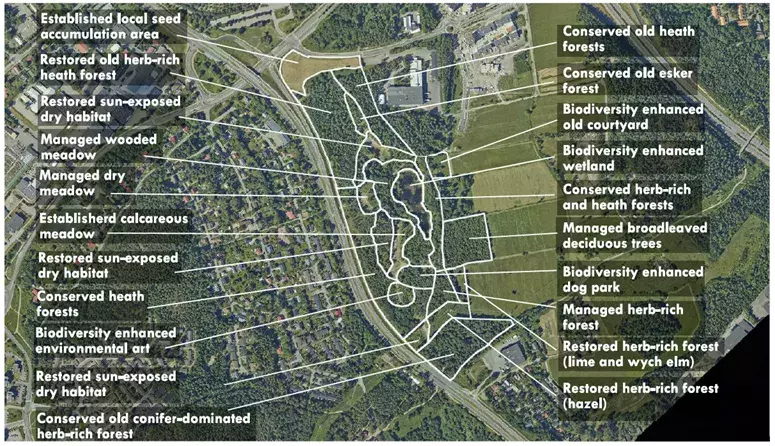
- Developing small-scale biodiversity pilots in pre-selected sub-urban neighbourhoods to improve understanding on effective solutions and their integration into urban planning and management mechanisms.
- Engaging local community for co-designing and improving their living environment through small-scale biodiversity pilots and recreational elements.
- Establishing a proactive dialogue with private sector actors (e.g. investors, urban planners, construction companies, etc.), improving their knowledge on the added value of urban biodiversity and tools for integration of nature-based solutions in urban development, as well as motivating them for proactive urban ecological restoration. Ecological compensation mechanism will be studied as a potential biodiversity park financing mechanism.
- Developing the biodiversity park as a participatory learning platform.
As you can imagine, a significant amount of interdisciplinary expertise from various organizations is required to carry out the aforementioned activities. To achieve this, the City of Turku formed a strong partnership, bringing together three higher education and research institutions – the University of Turku, Turku University of Applied Sciences Ltd., and the Natural Resources Institute of Finland – as well as Valonia, an expert organization for sustainable development in the municipalities of Southwest Finland, the NGO Wild Zone, the enterprise Vaso Ltd., and the SME Blokgarden Oy to collaborate on this project.
Furthermore, project partners from Turku invited 3 additional cities (Malmö/Sweden, Košice/Slovakia and Neapoli-Sykies/Greece) to follow their efforts, co-develop transfer tools and develop their own transfer studies – clear push towards maximizing transfer potentials of expected results.
Ambition
All the interviewees you’ve read about so far share a common short-term ambition: to simply get things done and deliver on the planned activities. This focus is understandable, given the many uncertainties at the start of any innovation project. Despite the best planning efforts, it's impossible to predict exactly how the project will unfold.
All key players recognize that this will be a learning journey, and that flexibility and a willingness to search for solutions will be crucial in the years ahead.
It would be wonderful to see that in 10 years, a network of biodiversity parks has emerged across Europe, inspired by Turku's example and the work we've done here to support diverse nature!
Maija Rusanen, the Project Development Unit of the City of Turku
Any measurable impact on biodiversity from the project would be a significant achievement. However, the real “WOW!” factor lies in our ability to learn from this project and apply the proven solutions across all our neighborhoods.
Elina Rantanen, the Deputy Mayor of Urban Environment of the City of Turku
Still, as reflected in the statements provided, our team also includes some dreamers. Personally, I’m glad we do, as their vision and enthusiasm will be essential in guiding us along the winding path to success.
For conclusion
Dear reader, for the Urban Biodiversity Parks project and all of us involved in its implementation, this journey is just beginning. We hope you will continue to follow our progress, celebrate our successes, and learn from our challenges. After all, the path to innovation is never straightforward, but it is always inspiring.
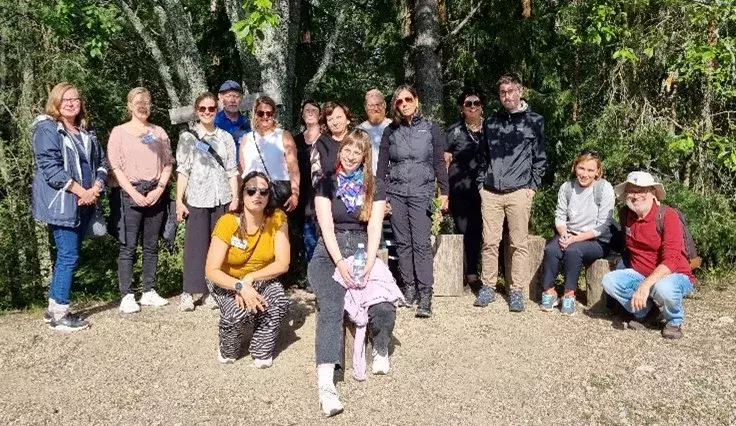
About the author:
B. Sc. Geography,
Sustainable Development Consultant at ZaVita ltd. and EUI Innovative Actions Expert of the Urban Biodiversity Parks project.
Klemen Strmšnik is a geographer with excellent understanding of natural and social processes and systems. He enjoys tackling new challenges in sustainable urban development, environmental protection, natural resource management and capacity building. With over 15 years of experience, he is one of the leading Project Managers at consultancy firm ZaVita Ltd. He is also a verified URBACT Lead Expert, EUI Expert and Trainer of trainers. He firmly believes that great things happen, if you say YES to new challenges and opportunities.
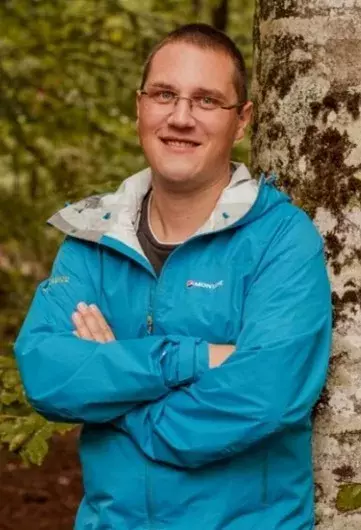
About this resource
The European Urban Initiative is an essential tool of the urban dimension of Cohesion Policy for the 2021-2027 programming period. The initiative established by the European Union supports cities of all sizes, to build their capacity and knowledge, to support innovation and develop transferable and scalable innovative solutions to urban challenges of EU relevance.
Similar content




